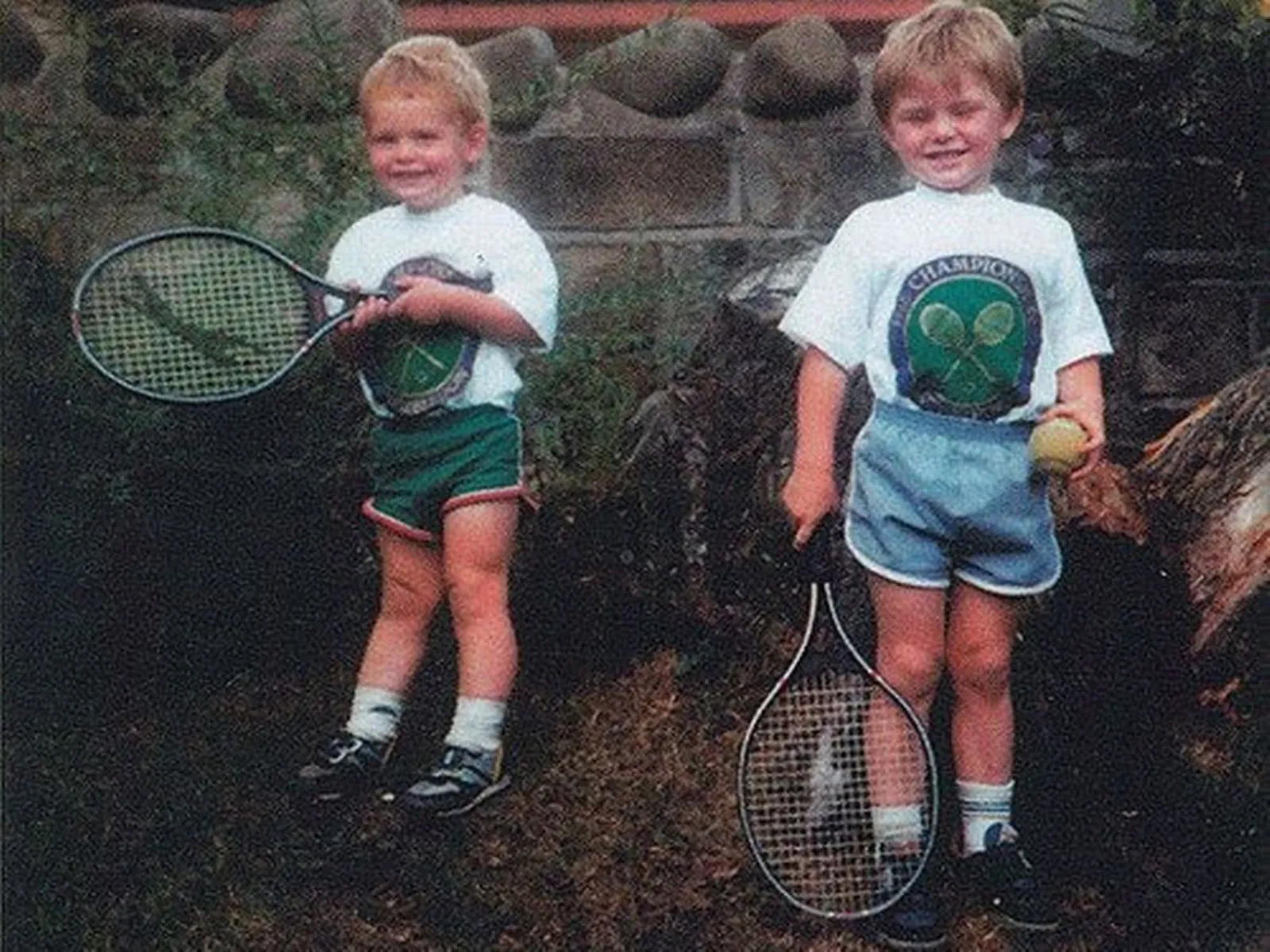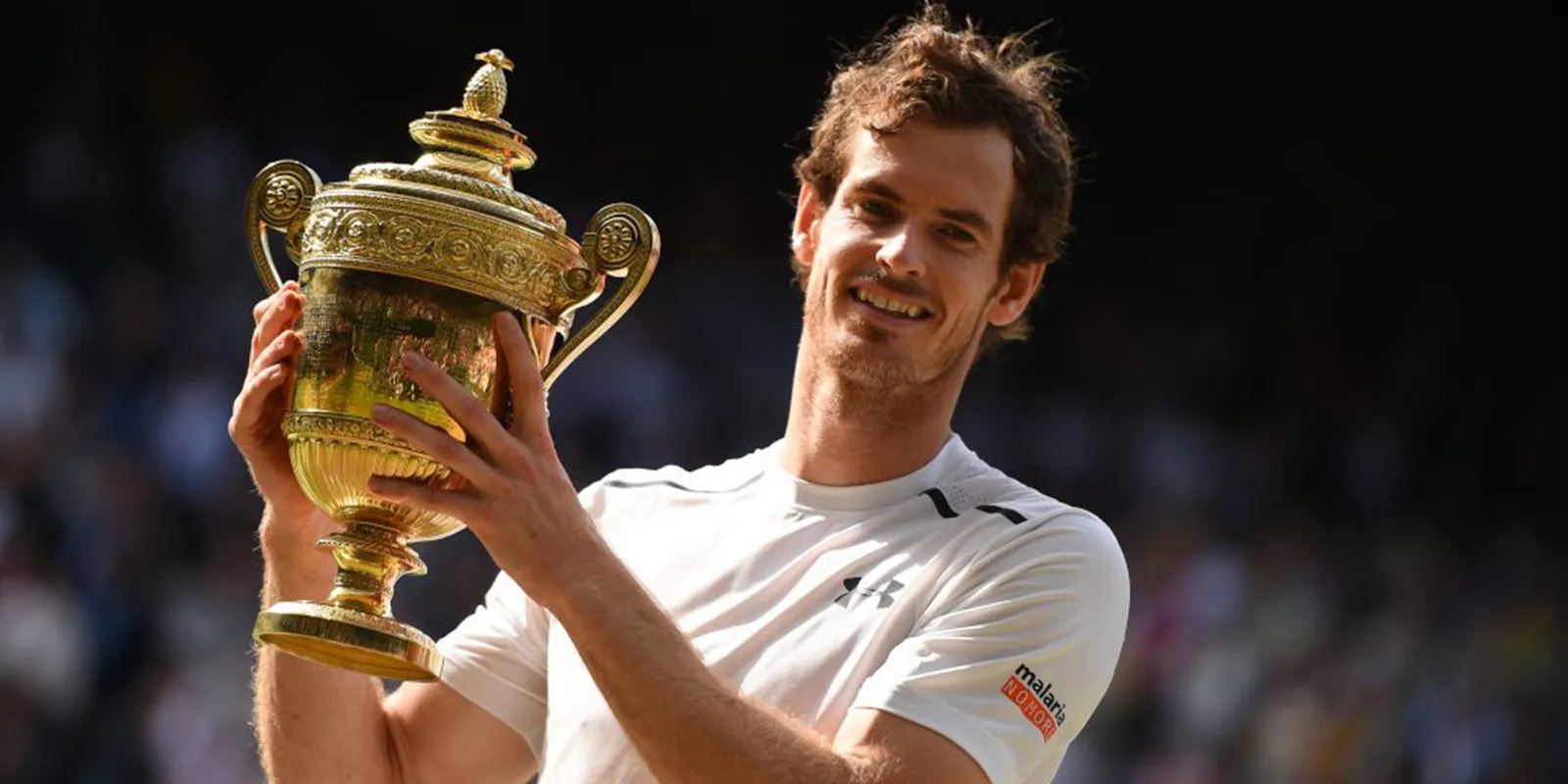Andy Murray: How Wimbledon’s True Superhero Overcame Childhood Tragedy
Superheroes are often shaped by traumatic childhood experiences and the brooding, mercurial Andy Murray is no different. Throughout his career he has visibly battled with his emotions on court and at times has seemed to draw upon this inner turmoil to fuel his fight for titles in the most competitive era of men’s tennis. Along the way, he’s alienated many fans but won them all back thanks to his heroic on-court displays.
Murray's career was derailed by a serious hip injury but the two-time Wimbledon champion regained his fitness and, in 2023, was looking forward to competing at Wimbledon once again and using his voice to fight important battles off the court as well.

Tragedy in Dunblane, Scotland
Andy Murray was born in Scotland in 1987 into a sporting family. His grandfather had been a professional soccer player and his mother, Judy, was a tennis coach who briefly played as a pro. Her two sons, Andy and his older brother, Jamie, were both tutored by their mother from the tender age of three years old, swiftly developing into promising young players. That promise was almost snuffed out at a very early age when both boys found themselves in close proximity to the 1996 Dunblane massacre, the most deadly mass shooting in British history.
The perpetrator, Thomas Hamilton, was a local man who took several firearms with him to the elementary school where both Andy and Jamie were pupils. Hamilton made his way to the gymnasium, where a class of five year olds were in attendance, and he opened fire killing 16 children and one teacher, and injuring 15 others, before taking his own life. At the time, Andy was nine years old and - although neither he nor his brother were directly involved in the incident - it was only by a matter of moments; Andy’s class had been on its way to the gymnasium when the first shots were heard and the teachers diverted them into a nearby classroom.
Andy knew Hamilton - he ran a kids club that both Andy and Jamie had attended. They had even shared a car on occasions when Judy would offer Hamilton lifts to the train station. To make matters worse, Andy’s parents split up six months after the attack, and Jamie left home to attend a tennis training camp. The two brothers had been inseparable, and all of this upheaval on top of the trauma of the assault left young Andy with severe anxiety issues and breathing problems on the court.
In a rare example of Murray talking about his emotional struggles, he described in 2019 how tennis helped - and continues to help - him as an outlet for his emotions, saying, “My feeling toward tennis is that it’s an escape for me in some ways because all of these things are… stuff that’s bottled up, because we don’t talk about these things and they’re not things that are discussed. The way that I am on the tennis court, I show some positive things about my personality, but I also show the bad things, the stuff that I really hate. I feel like tennis allows me to be that child that has all of these questions and that’s why tennis is important to me.”
This can be seen in his on-court performances as an adult; he has always been one of the more emotional and demonstrative players on the tour, and this has led to strained relationships with tennis audiences, especially early in his career.
"The brand new social experience where you activate your gaming skills as you train like a spy."
- TimeOut
Take on thrilling, high-energy espionage challenges across different game zones.

British when he wins, Scottish when he loses
Murray turned pro in 2005 at what was the tail end of an agonizing period of British tennis failure, especially in the men’s game where Britain’s only two notable male players of the last few decades, Tim Henman and Greg Rusedski, were approaching retirement.
Before those two, the last British tennis stars to achieve anything of note were Virginia Wade, who won Wimbledon in 1977, and John Lloyd, who reached the Australian Open final in the same year. During the 1980s and early 1990s no British player appeared in the top 20 of either tennis tour’s rankings, and with the exception of Virgina Wade reaching the quarter finals in 1983, British participation in the second week of Wimbledon was strictly limited to umpires and court staff.
This finally started to change in 1997, when Rusedski reached the quarter finals of Wimbledon - in itself enough to eclipse every British player who came before him for a generation - before achieving the seemingly impossible and firing his way to the US Open final.
Coming up alongside him was another young talent, the grass court specialist Tim Henman, whose love of Wimbledon saw him reach four quarter finals and four semi finals in a nine-year period between 1996 and 2004, but he was never able to convert home court advantage into a final. Henman had a peculiar relationship with the Wimbledon crowd, who were hugely supportive of him when he was playing well but would often turn sour at the first hint of adversity, reverting to the cynically pessimistic attitude that had become ingrained over the previous decades of failure.

Arise, Sir Andrew
For a young Andy Murray, the efforts of Henman and Rusedski were hugely inspiring but also left him under a great deal of pressure to build on their legacy. A lot of attention fell on Andy as the new great hope of British tennis but his role as standard bearer for the nation’s hopes got off to a terrible start when a joke about football backfired spectacularly. In the run up to the 2006 World Cup, Murray was asked who he would be supporting given Scotland’s failure to qualify for the tournament. His reply - “whoever England are playing” - was an example of traditional Anglo-Scottish banter that wouldn’t merit a raised eyebrow if it came from a Scottish soccer player, but for the fickle, judgmental crowds at Wimbledon, hosted at the All England Club, this was a bridge too far.
That one incident led to Murray gaining a reputation for being “anti-English” and consequently his early appearances at Wimbledon were met with hostility from the crowd; sarcastic cries of “Come On England!” would echo around the court, and he was even booed on occasion. Andy later recounted how someone managed to get a message to his locker saying, “I hope you lose every tennis match for the rest of your life.” While Murray has always strenuously denied the anti-English label, he’s also admitted that during those early seasons of his career, he did not enjoy playing on home soil as much as he did abroad.
It took a long time to win the home crowds over. Murray reached three consecutive semi-finals at Wimbledon from 2009 onward, losing first to American Andy Roddick, and then two years running to Spanish champion Rafael Nadal. In 2012 Murray went one better, finally reaching his first Wimbledon final - and the first for any British man since 1938 - where he faced off against Roger Federer. This was his third Grand Slam final against Federer, and his third defeat, although he did win a set for the first time.
An opportunity for revenge swiftly presented itself a fortnight later at the 2012 London Olympics, and Murray seized it, beating Djokovic in the semifinals and Federer in the final to claim gold for Great Britain.

Andy Murray: tennis champion
Winning a tournament - even if it wasn’t Wimbledon - at the All England Club seemed to propel Andy to new heights of confidence and ability. He reached the next two Grand Slam finals, both against Djokovic; Murray won the US Open in a nail-biting, five-set epic, claiming his first major, but Djokovic won the return match in Australia.
After missing the French Open through injury, Murray returned to the center court at Wimbledon, the scene of his Olympic triumph less than a year earlier, with expectations through the roof. He did not disappoint, besting Djokovic once again in the final, and becoming the first British man to win the competition since Fred Perry in 1937, and the first Scot to lift a Wimbledon singles trophy since Harold Mahony in 1898.
Accusations of “anti-Englishness” fell away, and the whole of Britain finally embraced Murray as their sporting superhero; he repaid them by winning another Wimbledon title in 2016 and retaining his Olympic title the following year, becoming the only man to date to have won Olympic tennis gold twice. He was eventually knighted for his efforts in 2019.
Sadly, a serious hip injury effectively put paid to Murray’s career in 2018. He was ranked number one in the world at the time, and after numerous operations and attempted comebacks he has struggled to recapture his old form. The process has been extremely painful for Andy, both physically and emotionally, and it has also caused him to be more open about the travails he has faced throughout his career.
He has also begun to use his voice to help others, even speaking out about his belief in the need for gun control in the wake of the 2002 Uvalde school shooting. Although Murray has lent his celebrity to numerous good causes throughout his career, this is the first time that he has felt able to discuss his own traumatic childhood experiences in public, and is a hopeful sign that he will find new, productive ways to help share his experiences and emotions to inspire and support tennis fans worldwide.
SPYSCAPE+

Join now to get True Spies episodes early and ad-free every week, plus subscriber-only Debriefs and Q&As to bring you closer to your favorite spies and stories from the show. You’ll also get our exclusive series The Razumov Files and The Great James Bond Car Robbery!


Gadgets & Gifts
Explore a world of secrets together. Navigate through interactive exhibits and missions to discover your spy roles.
Your Spy Skills
We all have valuable spy skills - your mission is to discover yours. See if you have what it takes to be a secret agent, with our authentic spy skills evaluation* developed by a former Head of Training at British Intelligence. It's FREE so share & compare with friends now!
* Find more information about the scientific methods behind the evaluation here.


Stay Connected
Follow us for the latest
TIKTOK
INSTAGRAM
X
FACEBOOK
YOUTUBE